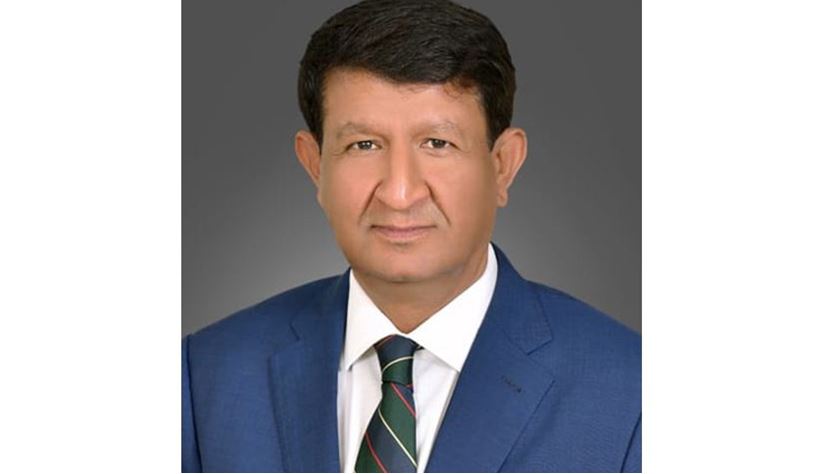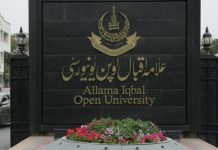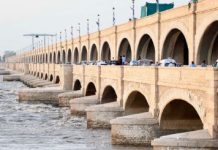Ishtiaq Ahmed
Great things can come from sheer imagination, provided a country’s leadership is able to understand the public pulse and then rechart its national destiny on the basis of a reimagined future. Saudi Arabia’s Vision 2030, an outcome of such imagination by Crown Prince Mohammed bin Salman, is steering the Kingdom into a futuristic journey, with one grandiose project after another. Oxagon is the latest addition — a floating hexagonal industrial complex that will, in a decade’s time, provide the world’s first fully integrated port and supply chain ecosystem for NEOM.
NEOM itself is being built as a futuristic city at a price tag of $500 billion on the Red Sea coast in the northwestern Saudi province of Tabuk. Powered by green hydrogen, it seeks to provide a postmodern experience in urban living that we can only dream about — with robot maids, airborne taxis, an artificial moon and much more.
The Line is NEOM’s flagship project. It is a linear city linking the coast of the Red Sea with the region’s mountains and upper valleys that is being built along a 170 km line — with no cars, no streets, no carbon emissions and a hyperloop running down the middle, providing a supersonic, friction-free travel service to its 1 million residents.
Oxagon represents a fundamental shift in how the world views manufacturing. Its smart factories will offer products in sustainable energy, autonomous mobility, water innovation, sustainable food production, health and well-being, modern methods of construction and technology, and digital manufacturing, including telecoms, space technology and robotics.
NEOM and its flagship projects will operate in “digital air,” with satellite communications, cloud parks and a hyperdata center. Together with two major tourism and entertainment destinations — the Red Sea Development Project and AMAALA — they are geared toward accomplishing Vision 2030’s strategic goal of making Saudi Arabia a hub of international investment, business, travel, tourism and trade.
The same goal underpins so many other mega-tourism and entertainment projects that celebrate and promote Saudi Arabia’s heritage and natural beauty, such as Qiddiya near Riyadh, AlUla in the northwest and Soudah in the Asir region. There are also ambitious infrastructure ventures, from multi-lane metros to smart housing complexes and business districts across major cities.
Being the center of the Islamic world, Saudi Arabia already hosts millions of Muslims for Umrah and Hajj every year. However, its liberal visa policy introduced in 2019 is meant to attract other foreign tourists who yearn to explore and seek pleasure in a new territory. Vision 2030 seeks to attract 100 million tourists annually by the end of the decade, with the National Tourism Strategy announced in October planning to invest $1 trillion in the tourism sector.
But the Kingdom also wants more foreign investors, hoping to raise $100 billion in foreign direct investment by 2030. Under the National Investment Strategy announced at the Future Investment Initiative Forum in October, it will spend $7 trillion to implement the Vision 2030 projects. The contributions will come from the Public Investment Fund, with a net worth of $450 billion, and the private sector, including Saudi Aramco and the petrochemical firm SABIC.
The FDI is hard to come by, but its prospects have increased due to the revamping of the regulatory framework and progress in other enabling conditions, resulting in the issuance of more than 400 FDI licenses in the first quarter of 2021. In February, the government also issued an ultimatum to international companies to either shift their regional headquarters to the Kingdom by January 2024 or risk losing their government contracts. The response was prompt, with 40 multinationals, including PepsiCo, Siemens and Unilever, deciding to relocate to Riyadh — a trend that is likely to accelerate.
Saudi Arabia has a clear advantage over other Gulf states in terms of geography: It has a landmass the size of Western Europe, with two vast coastlines on key shipping routes. The Red Sea ports, with NEOM and Oxagon as the major industrial outposts, will particularly help the Kingdom to harness 13 percent of the world’s trade through the Red Sea.
Saudi Arabia also has an edge over other Gulf competitors in terms of demography: The bulk of its 33 million population is young, offering an enormous demographic dividend. Vision 2030 seeks to tap this potential by using the Saudi drive to diversify its oil-based economy and become one of the 15 largest economies in the world by 2030 to significantly curtail youth unemployment, especially by promoting small and medium-sized enterprises and raising women’s participation in the workforce, which has already increased from 20 percent to more than 33 percent in just two years.
Such revolutionary happenings in the hitherto conservative nation with a rentier economy offer a great lesson in leadership for a world in crisis.
Ishtiaq Ahmad
Vision 2030 has also impacted the daily lives of ordinary Saudis in ways that were unimaginable until recently, such as opening up an enormous social space in sports and entertainment for the craving youth. The country is now a popular regional venue for music concerts, with international stars set to perform at the Formula One Saudi Arabian Grand Prix in Jeddah in early December. Starting with one cinema in 2018, it now has movie theaters across the country. It was also no surprise that, within two years of the lifting of the ban on women driving, a female driver enjoyed a major race win.
Such revolutionary happenings in the hitherto conservative nation with a rentier economy offer a great lesson in leadership for a world in crisis: That the destiny of a nation ultimately rests on the aspirations of its citizens, and that only a ruler with a sense of history and a vision for the future has the will and the ability to assess and meet public aspirations ahead of time. This is a necessary condition that naturally opens up limitless possibilities for national progress and its global expression in the times to come.
Ishtiaq Ahmad is a former journalist, who subsequently served as the vice chancellor of Sargodha University in Pakistan and as the Quaid-e-Azam Fellow at the University of Oxford.












